Nicaragua Black Honey treatment | New Segovia Micro batch Cafetos de Segovia processing Plant
Professional coffee knowledge exchange More coffee bean information Please pay attention to coffee workshop (Weixin Official Accounts cafe_style)
[Nicaragua Black Honey Treatment]
Country: Nicaragua Fiscal year: 2003
Region: Nueva Segovia
Processing plant: Cafetos de Segovia
Altitude: 1200-1400 m
Breed: Kadulla/Kaduai
Grade: SHG
Treatment: Black honey treatment
01| Factory Introduction
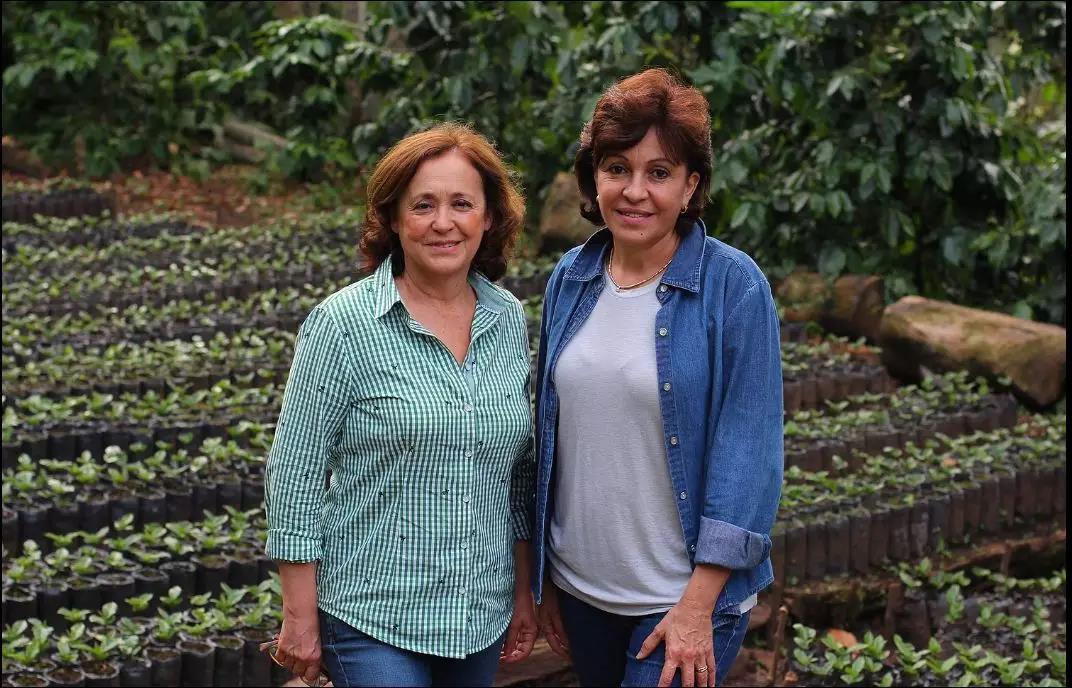
Cafetos de Segovia Microbatch belongs to the Albir family's second-generation sisters, Ana and Martha Albir, who inherited their passion for coffee from their father. The Albir family bought a coffee farm in 1991 until political disputes forced them to leave the country and stop the daily operation of the farm. In 2007, Ana and Martha decided to take over the farm and inherit from their father.

In 2015, they also invested in a processing plant and in 2016 began coffee processing in Cafetos de Segovia, providing processing and export services not only to their own family farm but also to 11 nearby farms.
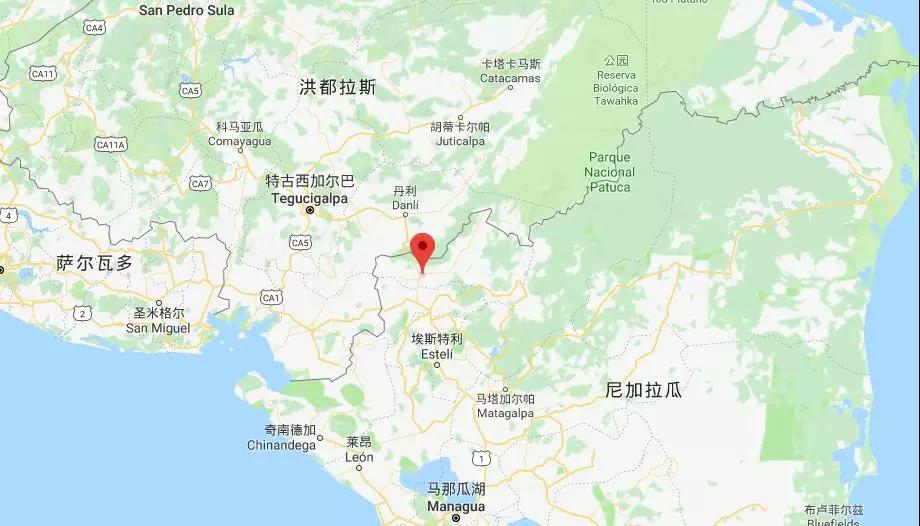
02| Introduction of origin

The Nueva Segovia region and its surrounding hills are located on the northwestern border of Honduras and Nicaragua. Nueva Segovia is one of the smallest growing regions in Nicaragua, but coffee from Segovia has a good flavor.

Coffee has been grown commercially in Nicaragua for more than a century, but it has received little attention from coffee growers due to political and economic instability. In recent years, coffee plantations that had been taken over during the Nicaragua revolution had been returned to local families, and the country was striving to become a coffee producer with its own characteristics.
03| green bean analysis

Caturra is a natural variety of bourbon, discovered in Brazil in 1937, and its tree is not as tall as bourbon, but shorter. Due to the inheritance of Bourbon's bloodline, it has a weaker resistance, but its yield is higher than Bourbon's. Although found in Brazil, cadura is not suitable for growing in Brazil, so it is not cultivated on a large scale in Brazil, but is widespread in Central and South America, such as Colombia, Costa Rica, and Nicaragua.
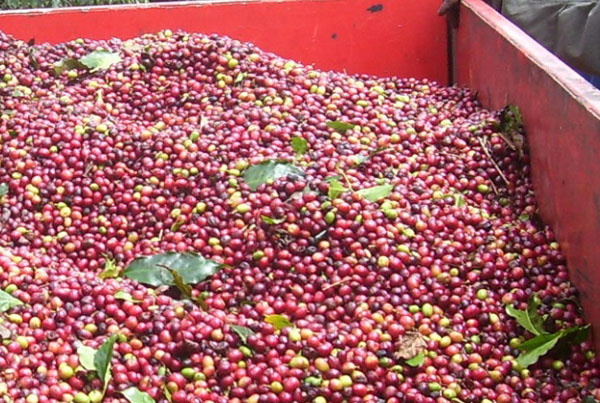
Kaduai is an artificial hybrid of Kadura and Mondu Novo. Kaduai has a relatively good ability to resist natural disasters, especially wind and rain. Kaduai trees are relatively low, and compared to other coffee trees, kaduai fruit is longer and harder to pick, and the fruit is both red and yellow.
04| Introduction to treatment
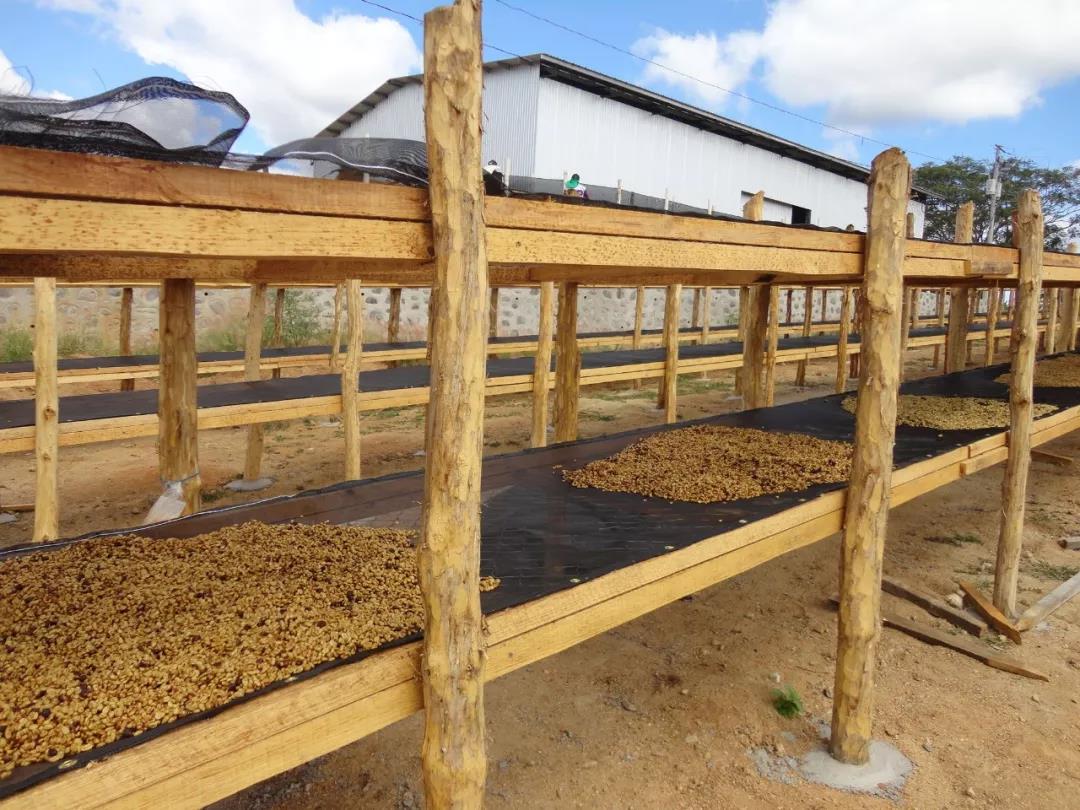
Honey treatment is an intermediate treatment between solarization and washing. It keeps the coffee clean from washing, and because it is sun-dried along with the pulp mucosa, it greatly increases the sweetness and caramel flavor of the coffee (the sugar content of the pulp mucosa is extremely high). Honey treatment first appeared in Costa Rica in Central America, mainly because of the lack of water resources in some high altitude areas of Central America, so coffee fruits were sun-dried together with the pulp mucosa after using a pulp sifter.
The drying time of black honey treated coffee beans in dark place was the longest, and the shorter the light time was, the drying time was at least 2 weeks. Black honey-treated green coffee beans are the most complex to process (due to the longer drying time, it takes longer to check to prevent mold fermentation of coffee beans), the highest labor costs, and therefore the most expensive.
05| baking analysis
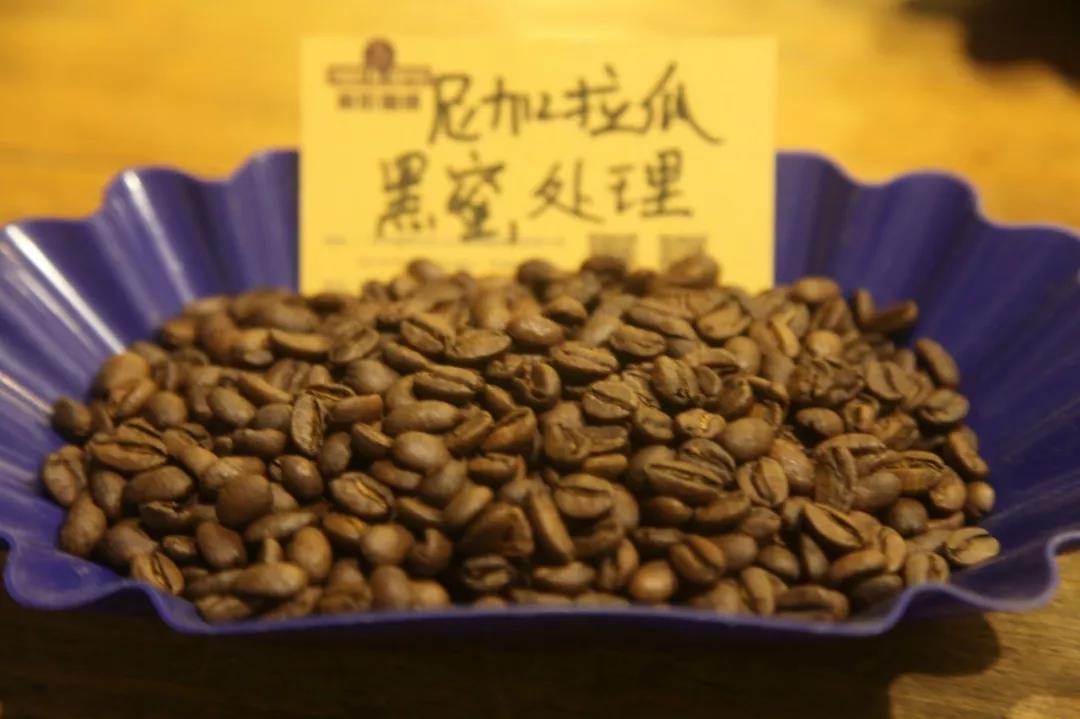
This coffee belongs to SHG grade, the bean quality density is medium, the roasting gently climbs with medium heat, the yellowing point is about 5 minutes, then the fire is reduced to enter the Mena reaction, and when it reaches 168 degrees, the fire is reduced again to lengthen the Mena reaction time, and the beans will enter the first explosion with a relatively stable temperature difference.
The first explosion starts at 185~186 degrees, at this time there will be a small exothermic process, it is recommended to reduce the fire development flavor at 191 degrees, 2 minutes and 20 seconds at 195.8 degrees beans.
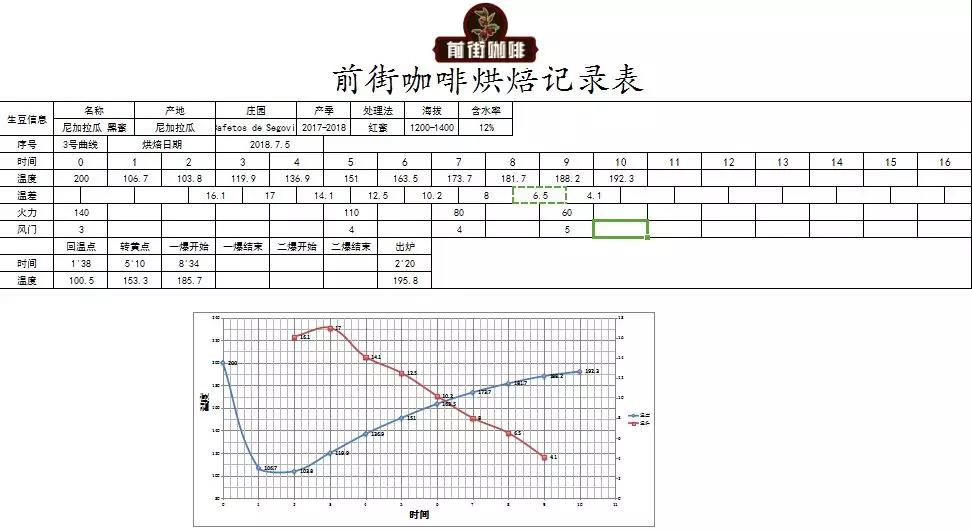
Baking machine Yangjia 600g semi-straight fire
Preheat the furnace temperature to 200 ° C and enter the boiler. Open the damper for 3, 30s and then open the fire. Adjust the fire to 140 ° C. Keep the damper unchanged. Return to the temperature point of 1`38`. Keep the fire. Turn yellow at 5`10`. The smell of grass disappears. Enter the dehydration stage. Reduce the fire to 110 ° C. When the damper is opened to 4. 168 ° C, reduce the fire again to 80 ° C.
8 'dehydration is complete dehydration, the bean surface appears wrinkled and black stripes, toast flavor to coffee incense, for a prelude to explosion, then pay attention to listen to the sound of an explosion. To 8`34``start a burst, damper fully open 5. The development time after explosion was 2 minutes and 20 seconds, and the firepower dropped to 60 when it reached 191 degrees, and then it was put into the pot at 195.8 degrees.

This honey-treated bean replaces the cement floor with an African solarization trellis to accurately control the processing quality of raw beans. Spicy and herbal aromas with dried fruit, black rice tea, hints of apple and sweet notes on the sip, almond and berry aftertaste.
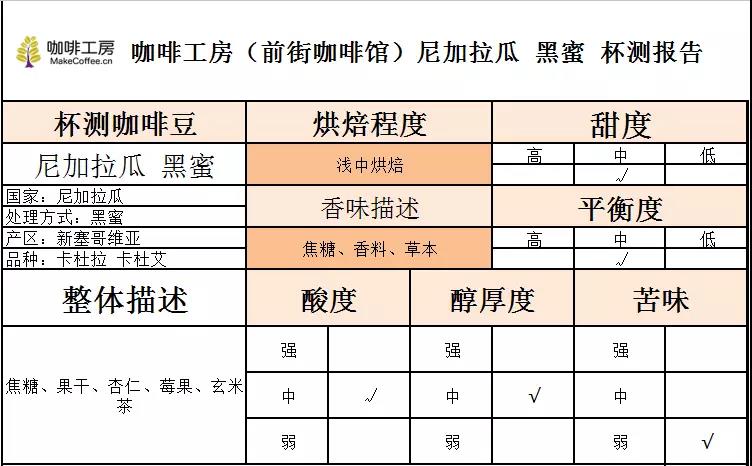
06| Brewing data
Recommended cooking method: hand brewing
Abrasion: 3.5 (Fuji R440)
Water temperature: 91°C
V60 filter cup, 15 grams of powder, water temperature 90-91 degrees, grinding 3.5, water powder ratio close to 1:15
30g water steams for 30s
Staging: water injection to 120ml, water cut off slowly to 225ml,
i.e. 30-120-75, total extraction time 2 minutes
Other suggestions for trickle-filtration extraction:
Normal pressure, recommended abrasiveness of 3.5-4/water temperature 90°C
Aile pressure, recommended 2.5 grind, water temperature 90°C
Hand washing: 3.5 degree of grinding, water temperature 91°C
3.5 Grinding-90 degrees water temperature
Important Notice :
前街咖啡 FrontStreet Coffee has moved to new addredd:
FrontStreet Coffee Address: 315,Donghua East Road,GuangZhou
Tel:020 38364473
- Prev
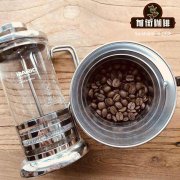
Flavor characteristics of Kenyan coffee insolated by French missionary Bourbon in Haniyeh Manor, Kenya
Professional coffee knowledge exchange more coffee bean information please follow the coffee workshop (Wechat official account cafe_style) [Kenyan Haniyeh French missionary bourbon sunburn] country: Kenya: Thika) processing plant: Haniyeh (ChaniaEstates) altitude: 1525 m breed: French missionary bourbon seed treatment: day
- Next
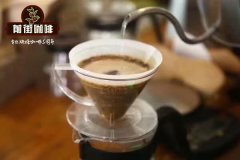
Flavor characteristics of Kenyan Coffee washed by Kenya Jiamoni Kiangombe
Professional coffee knowledge exchange more coffee bean information please follow the coffee workshop (Wechat official account cafe_style) [Kenya Jiamoni exquisite 72-hour washing] country: Kenya region: Kilinaga Kirinyaga altitude: 17001800 m soil: volcanic soil species: sl-28,sl-34 treatment: 72 hours washing 01 | processing plant introduction Kiangombe factory
Related
- Detailed explanation of Jadeite planting Land in Panamanian Jadeite Manor introduction to the grading system of Jadeite competitive bidding, Red bid, Green bid and Rose Summer
- Story of Coffee planting in Brenka region of Costa Rica Stonehenge Manor anaerobic heavy honey treatment of flavor mouth
- What's on the barrel of Blue Mountain Coffee beans?
- Can American coffee also pull flowers? How to use hot American style to pull out a good-looking pattern?
- Can you make a cold extract with coffee beans? What is the right proportion for cold-extracted coffee formula?
- Indonesian PWN Gold Mandrine Coffee Origin Features Flavor How to Chong? Mandolin coffee is American.
- A brief introduction to the flavor characteristics of Brazilian yellow bourbon coffee beans
- What is the effect of different water quality on the flavor of cold-extracted coffee? What kind of water is best for brewing coffee?
- Why do you think of Rose Summer whenever you mention Panamanian coffee?
- Introduction to the characteristics of authentic blue mountain coffee bean producing areas? What is the CIB Coffee Authority in Jamaica?

